| Related Pages: |
|
Furnace, Air Handler Noise
It is amazing how many problems faulty heating and cooling equipment can make especially if it makes a lot of different kinds of noises! Also amazing how many words people can use to describe them.
Below you can see a list of noises and sounds people usually use to describe a noise that is coming from their furnaces, heat pumps, air conditioners and boilers... |
|
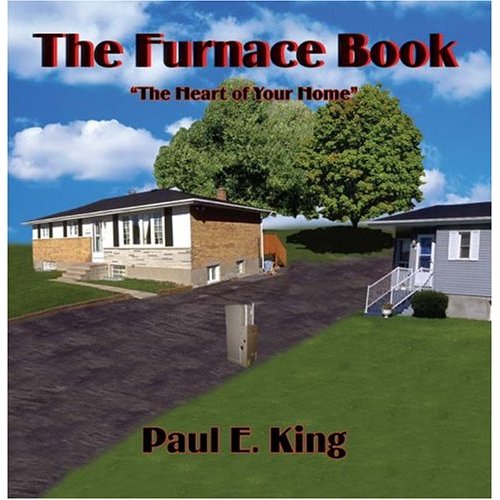
Replacing a furnace sounds like a job that must be done by a professional. You may be surprised to know that by following my simple instructions, you can install your own furnace in no time...
|
|
Furnace Replacement in Pictures
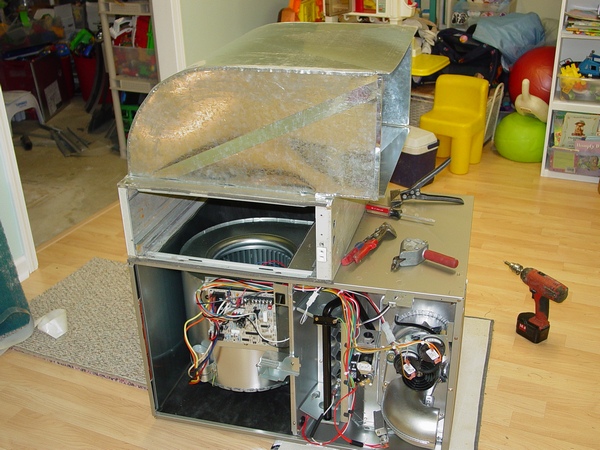
If you are planning to replace your furnace, you may need to see 137 high quality pictures on this page! It doesn't matter if you are going to hire an HVAC company to do the job or not, but you should know how the installation must be done the right way!..
|
|
Furnace Installation
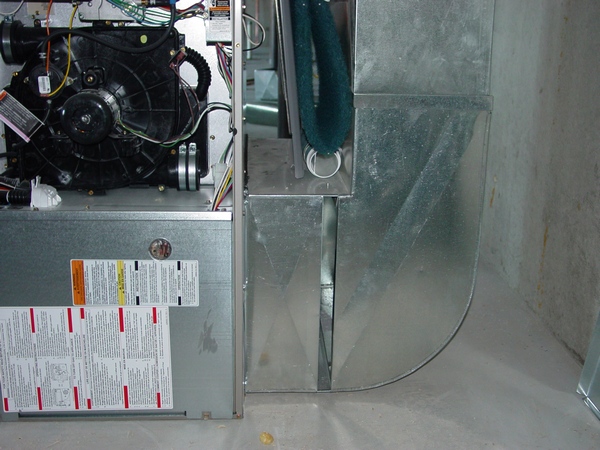
When it comes to furnaces, there are a wide variety of different makes and models. All of them in many ways are similar, though there may be characteristic differences between brands...
|
|
Furnace Replacement
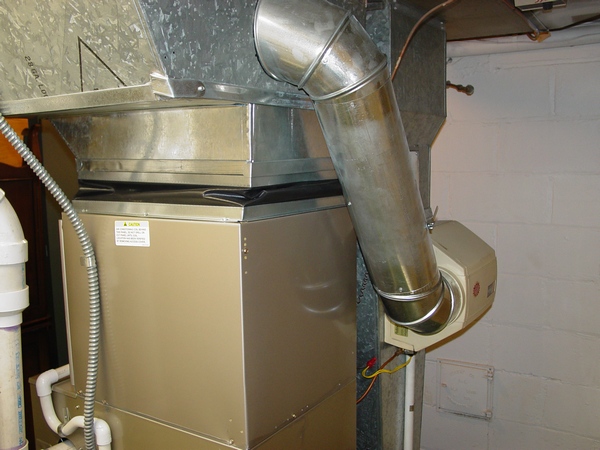
HVAC companies that are specializing on the new construction usually do not too much involved in furnace replacement business or, if it is a big company, it may have a special department dedicated just to it...
|
|
Repair or Replace Card
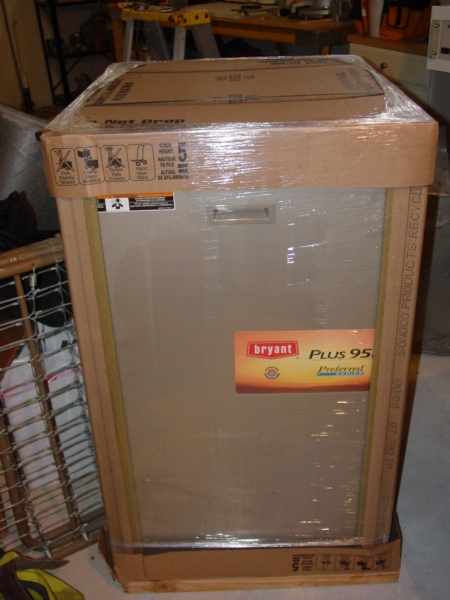
Furnace and Air Handler, A/C, Heat Pump, Boiler
|
|
|
Question
I have a Keeprite N9MP1075B furnace with a fan that won't shut off. The AC starts and stops as required, I tried the heat as well and it comes on and off no problem, but the fan will run 24/7. The fan switch is on auto, not on, and even tried a different thermostat and had the same results. I have read that I may have a stuck fan relay and try giving it a tap to loosen it up but I can't seem to locate it on my system. I have been told I might have to replace the board as the fan relay may be located there, the circuit board is ST9160B 1084.
Follow-up
I called a "pro" and he came in for about 5minutes and told me I need a new board.
Last night I did some more reading and went back to the furnace, found the fan relay, gave it a slight tap and the fan shut off. So far the AC has running normally with the fan shutting down as it should. It looks as though everything is working fine for now....with the same board.
Question
I'm troubleshooting an 80% furnace with an IFC board and its inducer blower motor stays on constantly even though the thermostat is set on Off and the fan on AUTO.
Answer
Check the limits. Relay board contacts might be arc together remove the W wire off the board that is your heating call see if the relay drops the ID out. There is a relay that sends power to that motor. It is probably on that board. The contacts have welded themselves together. You might get that to release by tapping the handle end of a screwdriver on that relay, but even if that works you need another board.
Higher pitched "squealing" sound may be caused by slipping blower belt or motor or shaft bearings in need of oiling
Lower pitched "rumble" sound may be caused by a poorly adjusted pilot light if this problem occurs with the burners off.
Lower pitched "rumble" sound may be caused by dirty gas burners if the problem occurs with the burners on.
Possible Repairs
• Oil blower motor lubrication ports (usually at each end of shaft) with light weight oil
• Check for proper belt tension. Belt should depress about 1" at center of span.
• If too loose, tighten belt.
• Replace frayed belt.
• Adjust pilot light
• Call furnace service technician to have burners adjusted or cleaned.
The burner in your gas furnace is ignited either by electronic ignition as found in most modern furnaces or with a pilot flame common in older style furnaces. The gas furnace standing pilot (flame is lit all the time) is sometimes referred to as a pilot light, but no matter what you call it, its purpose is to serve as a small ignition flame for the gas burner. And when this little flame fails to operate properly or go out, it's one of the most common reasons a gas furnace will fail to operate.
So as they say, good things come in small packages and the furnace pilot is no exception. This standing pilot flame (and its friend the thermocouple) makes or breaks your furnace's operation, so it's worth spending some time to learn how it works and how to troubleshoot the furnace pilot.
Question
Furnace won't light
My Carrier 58MXA060 won't light. The gooseneck came off of the intake air pipe and allowed water to pool up in the combustion air fan. When I turned the furnace on, the CAF ran for awhile, got hot, and then quit. I drained the water out of the fan but it still will not start. I checked the power to the fan on start-up but can get no voltage. I suspect the circuit board may have failed but not sure. Any help is appreciated
Follow-up
As it turned out, the problem was water in the line to the pressure switch. The condensate drain line was plugged and water backed up causing the pressure switch to stay in a closed position. I unplugged the drain line, disconnected all relative hoses and drained them, and tapped on the pressure switch to let any residual water drain out. That took care of the problem, the CAF took right off, the burner lit, all systems are go.
Question
I have an Interterm electric furnace that refuses to shutdown after completing the heating cycle. It does this intermittently, not all the time. I had a HVAC guy look at it 4 weeks ago, for 15 minutes and charged me 60.00 and did nothing. He said he would need to come back several times and replace one thing at a time and see what remedied the problem. I said no way. I ordered a new thermostat and replaced it myself. Furnace worked okay for 3 weeks, now it's back to working okay for part of the day then blower runs and heats without stopping. Turning the thermostat to off does not cut it off. I'm old and live alone, with limited income. What is the problem, so I can get someone reliable to maybe repair this?
Answer
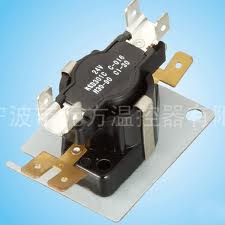 One of the heat sequencers is intermittently sticking. In defense of the tech he has to see it when it is sticking in order to know which one. May need to leave it running, when that happens, get someone down quickly to see it. One of the heat sequencers is intermittently sticking. In defense of the tech he has to see it when it is sticking in order to know which one. May need to leave it running, when that happens, get someone down quickly to see it.
Most likely you have two sequencers, bite the bullet and replace them both. It’s a common problem on electric units.
Bryant Troubleshooting Guide
|
|
Troubleshooting of 80% and 90%+ Efficiency Furnaces
1. Sequence of operation of the 80% AFUE efficient gas furnace Goodman
2. 394GAW / 58GS Sequence of operation.
3. How the 90% gas furnace cycles
4. No heat furnace: check the thermostat. Part 1
5. No heat furnace: Check the thermostat. Part 2
6. Mechanical wall thermostat lag and overshoot and the anticipator part 1
7. Adjusting the thermostat anticipator part 2
8. Adjustment of the thermostat anticipator without a meter
9. Furnace won’t start. What to do before calling the repair man
10. How to service the 80% AFUE gas furnace overview part 1
11. How to service the 80% gas furnace, flame rod checks. Part 3
12. How to test the 80%AFUE gas furnace inducer assembly and pressure switch. part 4
13. How to service the 80% AFUE gas furnace. How to check the limit switch. Part 5
14. How to service the 80% AFUE gas furnace, check blower, clean burners and check heat exchanger. Part 6
15. How to service the 80% AFUE gas furnace. Check amp draw and bearings of the motors. Part 7
16. How to service the 80% AFUE gas furnace. Check gas input. Part 8
17. How to service the 80% AFUE gas furnace. Adjust burners and finish service. Part 9
18. Troubleshooting the inducer of the 80% efficient furnace:
19. Combustion blower runs all the time, no burner. Snyder General GUA
20. Troubleshoot the gas furnace fan
21. Why does the gas furnace short cycle?
22. The HVAC transformer
23. How to replace a transformer (without burning up the new one)
24. Gas furnace pilot relight assembly sequence of operation, troubleshoot |
|
Furnace Blower
01. DIY Blower Wheel Replacement
02. Damaged Blower Shaft
03. American Standard Blower Wheel Replacement Part 1
04. Blower Wheels Part 2
05. HVAC Blower Wheel Adjustment
06. Dirty Blower Motor
07. Anatomy a Blower Motor: Replacement
08. HVAC Noisy Blower
09. HVAC 90%+ Heat Problem
10. HVAC Bad Gas Valve
11. HVAC another Easy One
12. Jerry Kelly HVAC Advises: Change Your Furnace's Air Filter
13. How to Change Your Furnace Filter
14. Measuring Month Old HVAC Air Filter Data
15. Wall Furnaces
16. Single-Stage vs. Two-Stage Gas Burners
17. HVAC Fixing an Intermittent Blower Relay
18. The Squirrel Cage Fan. How the Air Flow Works.
19. The Why of the Amp Draw of Furnace Blowers. Their Use in Air Handlers and Furnaces
20. Blower and Heat Exchanger Cleaning
21. How to Change the Fan motor Speed on a Gas Furnace
|
|
Gas Furnace Temperature Controls
1. Gas furnace temperature controls
2. Heat exchanger failure diagnosis, Goodman GMP model
3. How does the gas furnace flame rod work
4. Gas furnace won't stay lit. Cleaning the flame rod
5. Troubleshooting the limit switch on the 80% AFUE gas furnace
6. Gas furnace rollout switch operation
7. How to check the flame rod on the Snyder General GUA furnace
Igniters and Pilots
8. Gas furnace spark ignition controls
9. 58SS and 58GP carrier pilot dropout
10. Carrier 58SS 58GP 3 wire pilot assembly operation
11. 58SS pilot assembly description
12. How the hot stick ignitor works on the gas furnace
13. No heat, troubleshoot the HSI on the Snyder General GUA furnace.
Gas Valve
14. How to test the gas valve on a gas furnace with an ohmmeter
15. A look at the GSI electronic manometer
16. How to check gas input pressure on the RGDA furnace
17. Gas valve troubleshoot, Snyder General GUA furnace
Gas Burners
18. Gas burner types
19. Gas furnace manifold orifice sizes and flow rates
Pressure Switch
20. Troubleshoot the pressure switch on the 80% AFUE gas furnace
21. Diagnosing pressure switch problems on gas furnaces
22. How gas furnace pressure switches work
23. How to test water column gauges for gas furnaces
Transformer
24. How to troubleshoot the transformer |
Furnace Problems
01. Gas Furnace Symptom of Flame Sensor Failure
02. Electronic Flame Sensor Troubleshooting for Furnace
03. Checking Pressure Switch on Gas Furnace
04. Goodman GMPN Gas Furnace Draft Inducer
05. HVAC Blower Not Working, Troubleshooting Fan Control Board
06. HVAC Testing Blower Motor Windings
07. Cracked Heat Exchanger
08. Crack Heat Exchanger
09. Home Inspection of HVAC Gas Furnace
10. Furnace and Draft Tests
11. Replacing Furnace Igniter in My Central Unit
12. Squirrel Cage Noise on Oil Furnace
13. Furnace Grinding Noise
14. Noisy Furnace
15. Furnace Replacement Demonstration - Weatherization
16. HVAC - How to Make a Return Air Grille "Shut Up" |
|
|
A website "ductworkinstallation. com" focus on providing information and services related to the installation of ductwork systems , which are the tubes used to distribute heated or cooled air throughout a building as part of an HVAC system; essentially, it would be a platform for individuals or companies specializing in designing and installing ductwork for homes and commercial properties, offering details on the process, and potential contractors to contact for such services.
Key points about ductwork installation websites:
Services offered:
New ductwork installation, ductwork repair, duct cleaning, duct sealing, airflow balancing.
Target audience:
Homeowners looking to install a new HVAC system, individuals experiencing issues with their existing ductwork, commercial property owners needing ductwork for large buildings.
Information provided:
Explanations on different types of duct materials, design considerations for optimal airflow, potential benefits of proper ductwork installation.
|
|